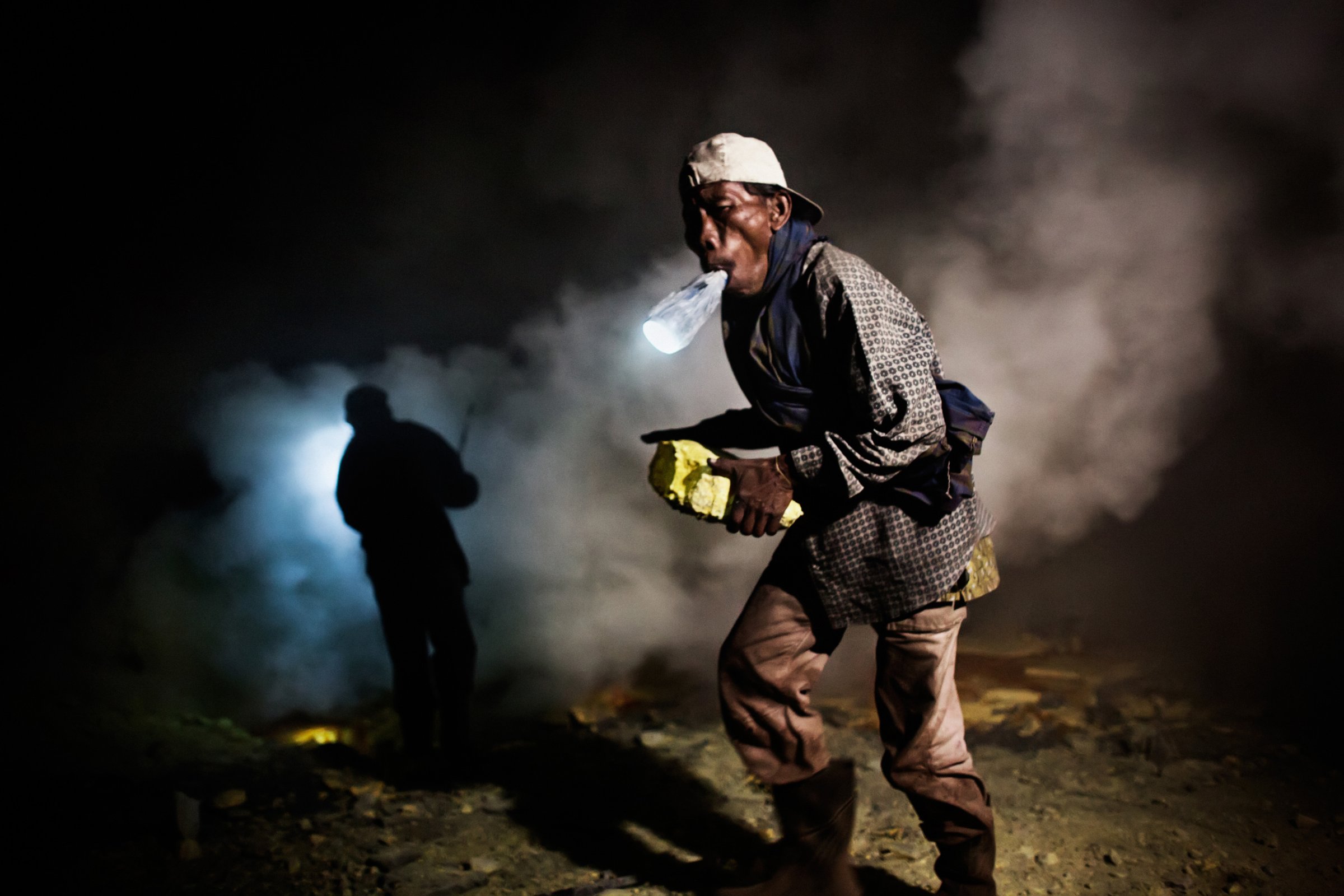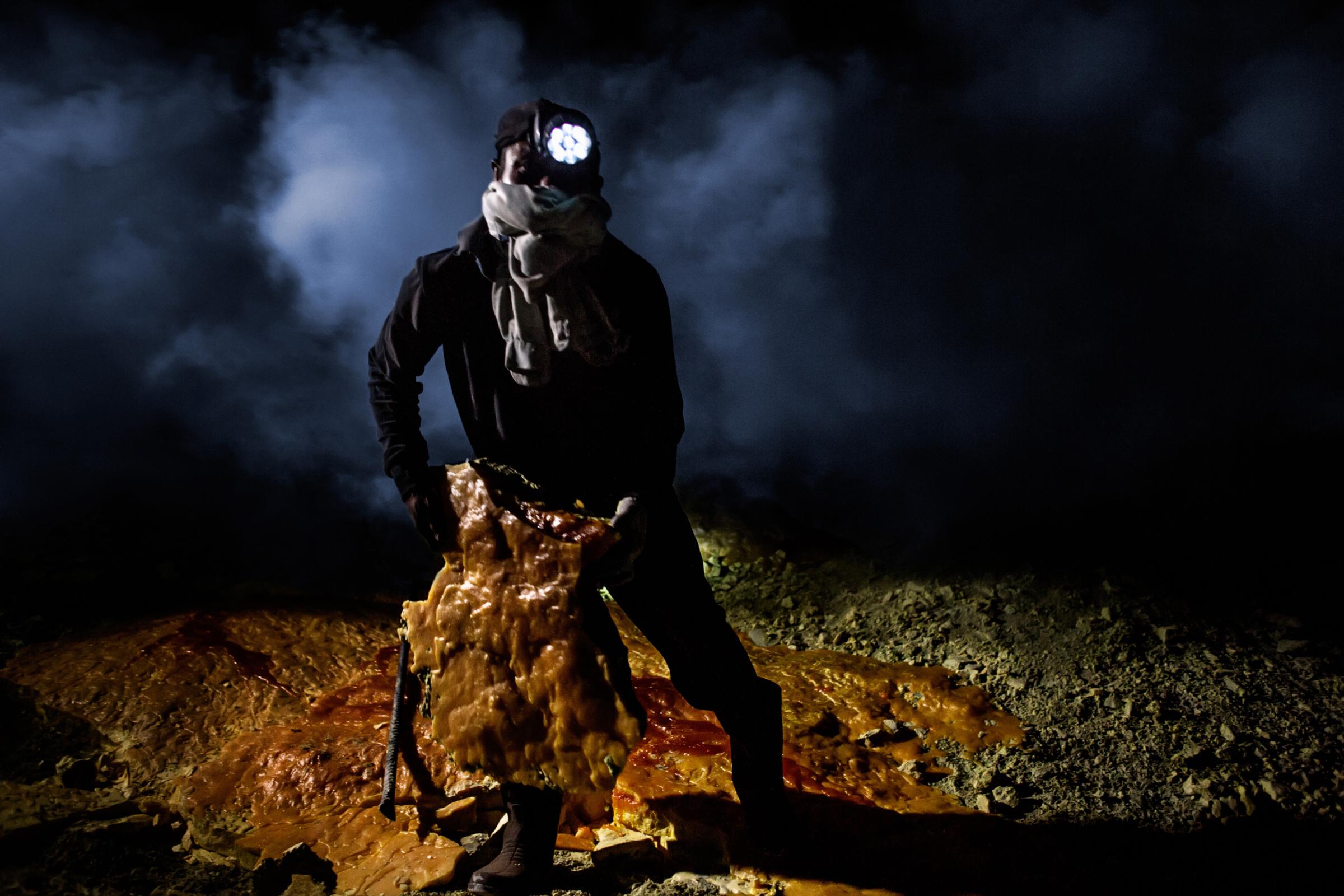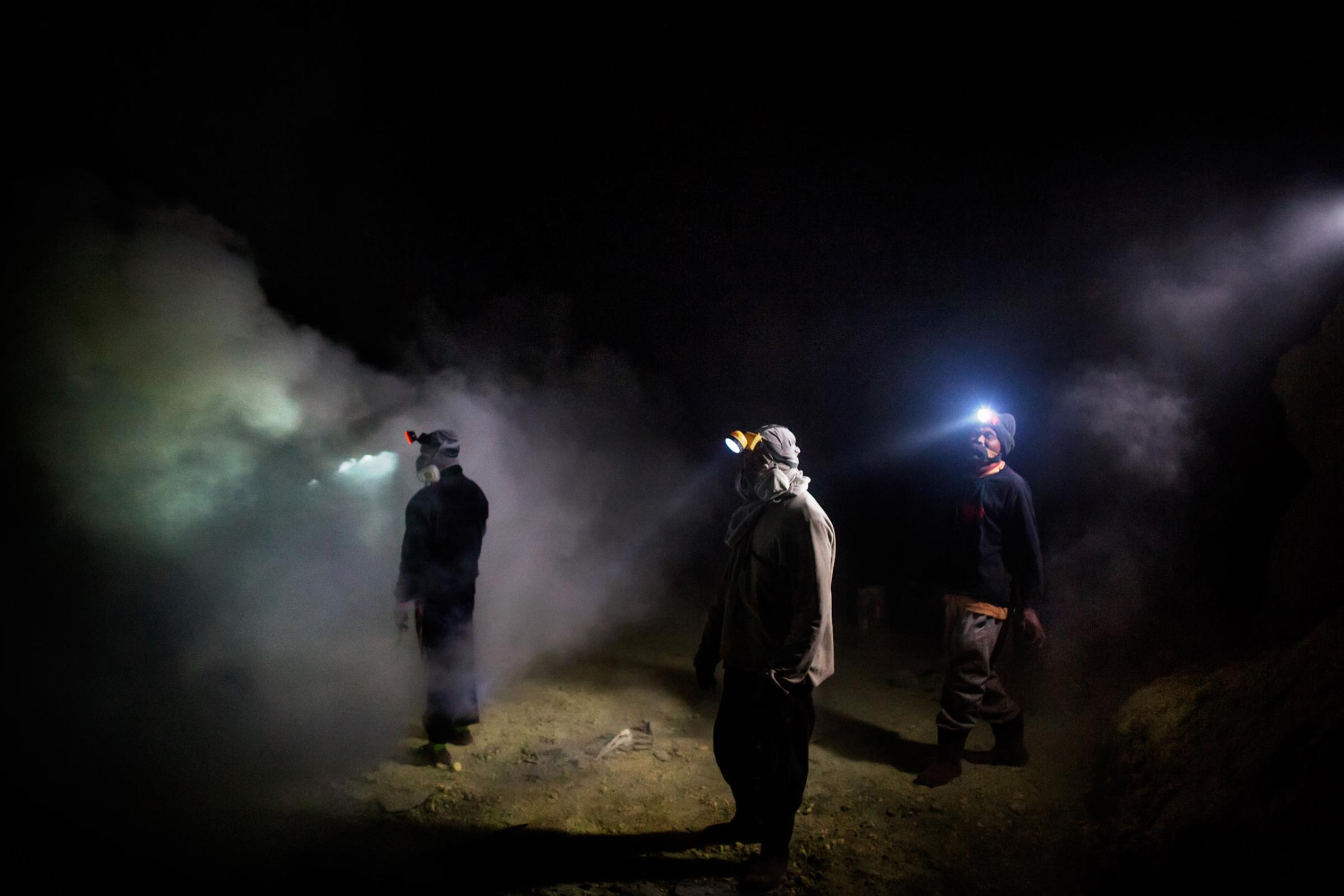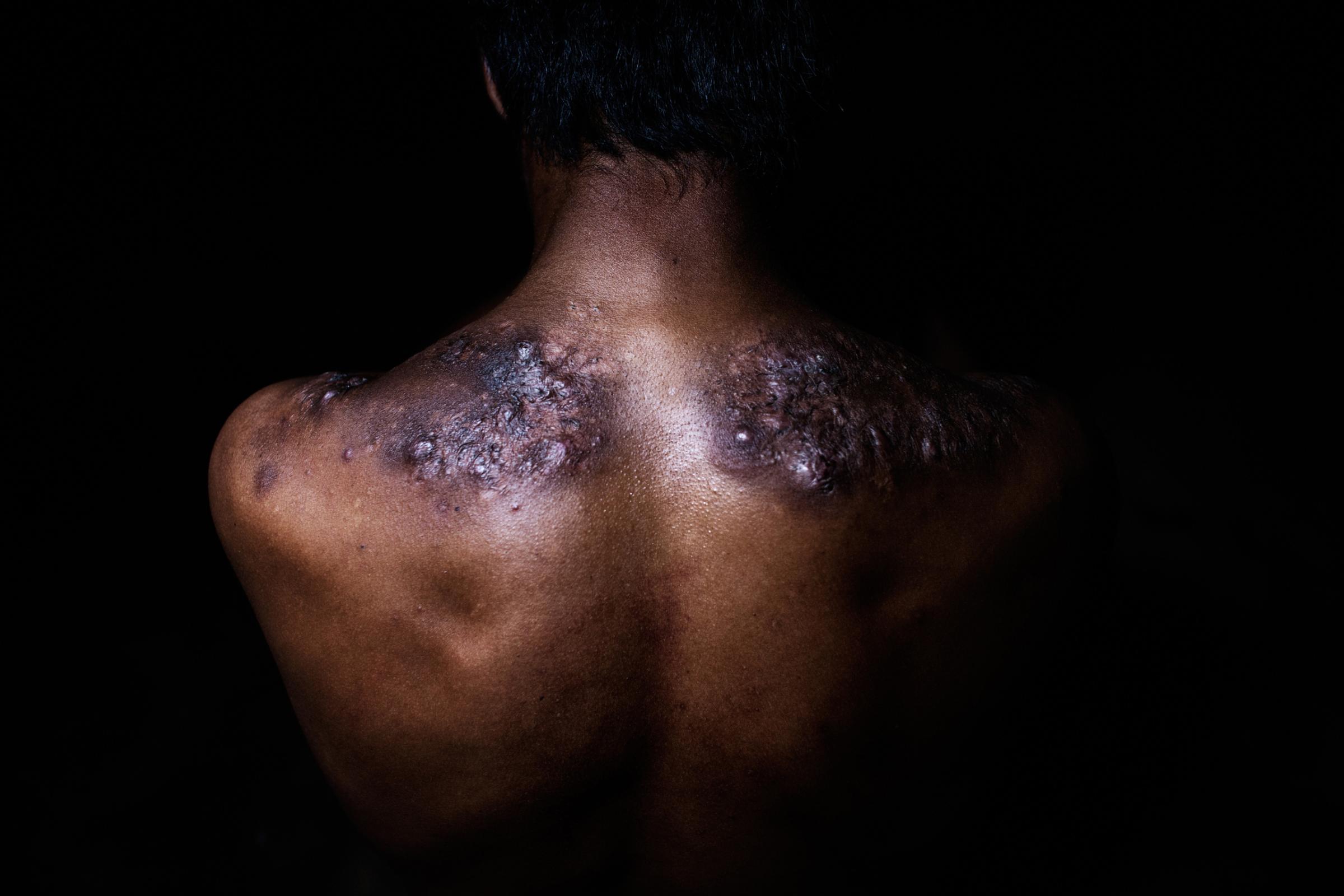
Looming 2,799 m (9,183 ft.) above sea level, Gunung Ijen in Indonesia’s eastern Java is a volcanic wonder that attract hundreds of foreign and domestic tourists daily. During daytime, they climb the mountaintop to reach Kawah Ijen, the volcano’s crater lake famous for its mesmerizing turquoise hue. When darkness descends, hikers clamor to witness the glowing blue liquid fire that streams from the crater down the mountainsides. It isn’t lava, but the sulfur for which Kawah Ijen is renowned.
It is also sulfur that brings hundreds of miners to Kawah Ijen every day. They make the perilous journey climbing 9,000 ft. to the summit and then 3,000 ft. down into the crater. The miners descend to the womb of the volcano, defying scorching heat and rarefied air, in search of the precious material that is used to manufacture countless products — from matches, rubber, insecticides and fertilizer to cosmetics, batteries, sugar and film.
Rome-based photographer Luca Catalano Gonzaga traveled to Indonesia in late last year and spent 10 days at Gunung Ijen to capture the miners’ daily toil. Many of the photos were taken after dark, as many men prefer to work when the heat is more tolerable.
Gonzaga titles his project “Devil’s Gold,” a biblical allusion to hell as the fiery lake that burns with brimstone — the ancient name for sulfur. Sulfur mining at Kawah Ijen is certainly a hellish job. Not much has changed since mining officially began here in 1968. Every day, around 300 men leave the base camp carrying traditional equipment like torches and metal poles to break the sulfur slabs, though with little protective gear. Only a few men are given gas masks, while the rest rely on wet scarves or rags to cover their mouths, in a largely futile attempt to protect themselves from the caustic gas that singes the eyes, throats and lungs, and can even dissolve teeth.
Once the miners collect their sulfur, they haul the fully loaded baskets, weighing between 70 kg (150 lb.) and 90 kg (200 lb.), out from the crater, climbing 60-degree slopes, and then down to the base camp. They get 10,000 rupiah (78¢) for 10 kg (22 lb.) of sulfur. Suwono, 33, works four days a week, from 6 a.m. to 2:30 p.m., to support his wife and son. Carrying 70 kg of sulfur twice a day earns him 140,000 rupiah ($11) — but it also comes with a price: Suwono has a disfigured back. Deformed spines and bent legs are disturbingly common among miners.
Such physically demanding and hazardous work means miners’ average life expectancy barely reaches 50 years. More than 70 people have died in work-related accidents at Kawah Ijen in the past four decades, many due to the toxic fumes that billow suddenly from the rock’s fissures.
Aware of the risks they face daily, the miners don’t want their children to follow in their footsteps. “They want to throw off the shackles of a destiny,” Gonzaga says, “for this reason, they push their kids to go to school and have an education.”
“Devil’s Gold” is part of a wider project called Invisible People, which is funded by Nando Peretti Foundation.
Luca Catalano Gonzaga is a photographer born in Rome. He co-founded Witness Image and focuses on covering human rights issues.
Michelle Molloy, who edited this photo essay, is a senior international photo editor at TIME.











More Must-Reads from TIME
- Donald Trump Is TIME's 2024 Person of the Year
- Why We Chose Trump as Person of the Year
- Is Intermittent Fasting Good or Bad for You?
- The 100 Must-Read Books of 2024
- The 20 Best Christmas TV Episodes
- Column: If Optimism Feels Ridiculous Now, Try Hope
- The Future of Climate Action Is Trade Policy
- Merle Bombardieri Is Helping People Make the Baby Decision
Contact us at letters@time.com